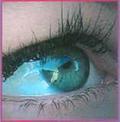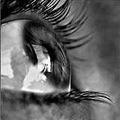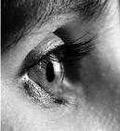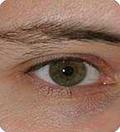|
Cross Eye Information
A Cross Eye condition is where the eyes don't line up with each other correctly and is also known as strabismus, but is more commonly referred to as simply cross-eye syndrome. Someone who is cross-eyed is unable to bring both of their eyes to the same point of focus and can never attain true binocular vision. Binocular vision is the normal state of vision that most humans have, in which the eyes naturally focus on the same one point in space. It is possible for anyone to cross their eyes, usually by focusing inward, but this is not true strabismus because they are still inevitably looking at the same spot, albeit at a greatly exaggerated angle. Cross-eye syndrome is usually caused by decreased coordination in the extraocular muscles, which are the muscles that line the eye sockets and control the motion of the eyes. Less often, strabismus is caused by a brain disorder that keeps the eyes from focusing correctly. Either way it is important to see an opthalmologist to Protect Your Eyesight as much as possible. If you want to find out if you have cross-eye syndrome, you can usually determine it by looking in a mirror and observing what your eyes do. Sometimes it's hard to tell just by looking at a mirror, so you may need to ask someone to just look at your eyes and see if they seem like they are not lining up correctly.
Strabismus is also called Lazy Eye a lot, because one of the eyes will appear to slowly drift off center after several moments of looking at the same object. This will lead to a gradual increase of Double Vision. It is also sometimes called a Squint. When opthalmologists are attempting to determine if you have cross-eye syndrome, they will most likely use what's known as a cover test, in which they ask you to focus on one object. Then, the Eye Care Specialist or Eye Care Professional will cover one of your eyes for a few moments and then remove the covering and observe your eyes. The process will then be repeated on the other eye. A cross eye will naturally refocus itself in the position of its preference while it is covered while a normal eye will remain fixated on the same spot even if it is covered for any length of time. If the opthalmologist observes one of your eyes refocusing after it has been covered, they will likely diagnose you with strabismus. Although the condition is not health threatening in any way, it's still a large inconvenience for many adults and can cause cosmetic effects that a lot of people don't like. Most people with a cross eye will have had it since they were a child, but sudden onset of strabismus has been known to occur. This leads to sudden double vision and sometimes can be accompanied by a droopy eyelid. If you have a cross eye, there is not much that can be done about it, but it is still possible to lead a completely normal life in the meantime. Remember nothing beats a healthy diet with the right balance of Vitamins and Minerals when it comes to preventing an Eyesight Problem.

Subscribe to EyeSight Vision Care! , our monthly newsletter with in depth information to help you keep up to date on how to Protect Your Eyesight with a free bonus. Fill out the form below. You'll then receive an email asking you to confirm that you subscribed. You'll always have the option to unsubscribe at the click of your mouse. Cross Eye to other Eye Conditions
|
More Information





















